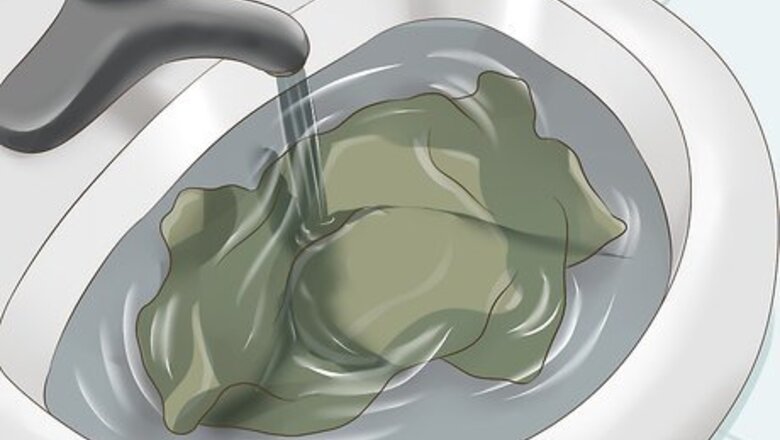
views
Removing Iodine From Clothing or Fabrics
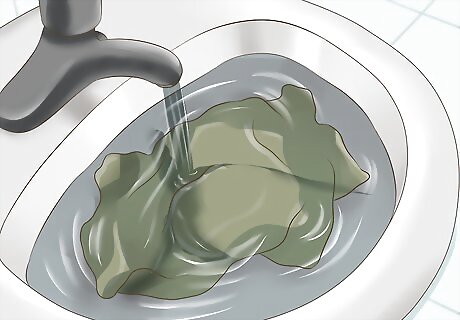
Flush the fabric with water. As soon as you notice the iodine stain on your clothes, immediately bring the clothing item to the sink and flush it with cold water. Let the water stream onto the stain until the stained area is completely saturated. Flushing the garment with water helps prevent the stain from setting. Expert Answer Q A wikiHow reader asked: "How do you remove iodine stains from countertops?" Michelle Driscoll, MPH Michelle Driscoll, MPH Founder, Mulberry Maids Michelle Driscoll is the Owner of Mulberry Maids, which is based in Fort Collins, Colorado. With five years of experience, her business specializes in cleaning homes and small offices. She holds a Masters in Public Health from the Colorado School of Public Health. Additionally, Mulberry Maids has an A+ rating from the Better Business Bureau. Michelle Driscoll, MPH EXPERT ADVICE Answer from Michelle Driscoll, MPH: Michelle Driscoll, a cleaning expert, suggests: "To remove iodine stains from your countertop, mix a few drops of ammonia with 1 cup of hydrogen peroxide. Soak a cloth in the solution and place the cloth over the stain until it is removed."
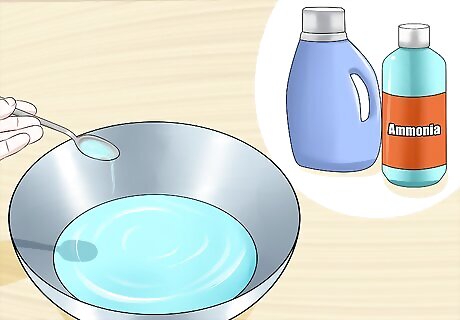
Create a solution of water, ammonia and liquid laundry detergent. After you flush the clothing item with water, create a cleaning solution in a large bowl that comprises of four cups (950 ml) of cool water, one tablespoon (14.79 ml) of ammonia and ½ teaspoon (2.4 ml) of liquid laundry detergent. Make sure that the laundry detergent doesn’t contain chlorine bleach, as ammonia and chlorine breach create harmful fumes when mixed together.
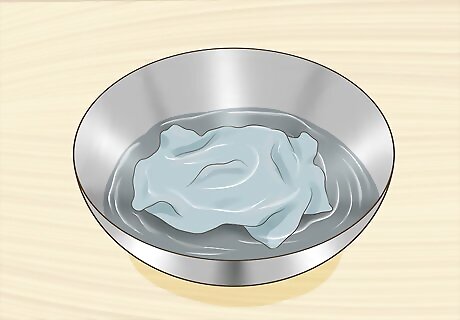
Soak the garment in the cleaning solution. After you create the cleaning solution, drop in the garment and completely submerge the stained portion in the liquid. Let the fabric soak for about half an hour. If your item of clothing is non-washable, spot clean the stain instead of soaking the garment. To spot clean, dip a clean cloth in the cleaning solution and dab at the stain gently to remove it.
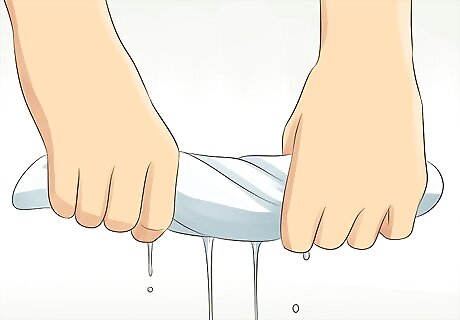
Wring out the garment and wash as usual. After around half and hour, take the garment out of the bowl of cleaning solution. Wring the garment out to release excess liquid, then wash the garment in the washing machine using your normal settings. Check on the garment before drying. If the stain is completely removed, dry the clothing item in the dryer. If the stain is only partially removed, keep treating the garment instead of putting the item in the dryer.
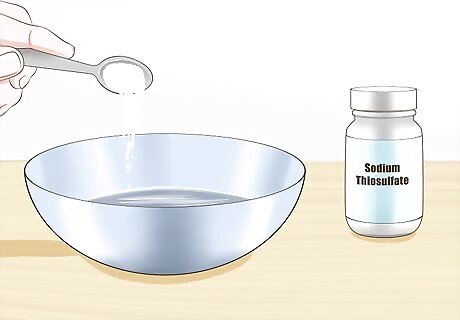
Create a stronger solution using water and sodium thiosulfate. If the iodine stain is especially old or saturated, the ammonia and dishwashing solution may not have been strong enough to remove the stain. To create a stronger solution, combine one cup (240 ml) of cool water with 1 teaspoon (4.9 ml) of sodium thiosulfate in a small bowl.
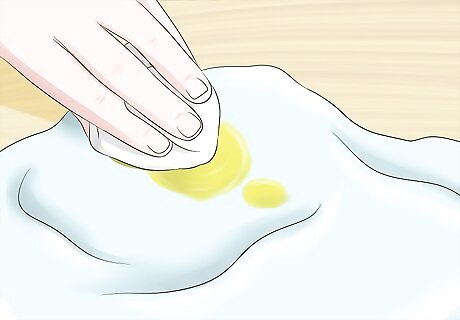
Spot-clean the stain with the solution. Dip a clean white cloth into the small bowl of sodium thiosulfate solution, then gently dab the spot with the cloth. Instead of rubbing, use soft sponging motions to help lift the stain. You should notice that the stain lifts and transfers onto the white cloth.
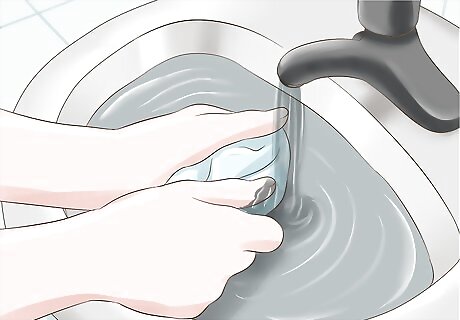
Rinse the stain with cool water. After you have lifted the stain, flush the stain again with cool water so that the cleaning solution is removed. Then launder the garment as usual.
Removing Iodine Stains From Upholstery
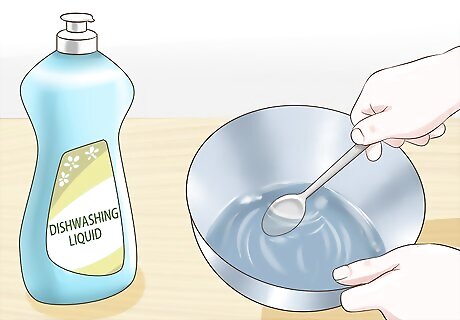
Make a solution of water and dishwashing liquid. In a small bowl, combine two cups (480 ml) of cool water with one tablespoon (14.79 ml) of dishwashing liquid. Stir to integrate the dishwashing liquid with the water.
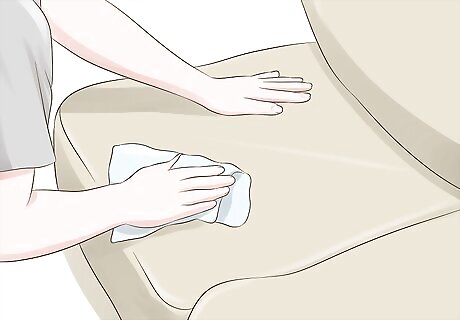
Blot the stain with the solution. Wet a clean white cloth with the dishwashing liquid solution, then dab at the stain with the cloth. You should notice that the stain starts to lift from the upholstery.
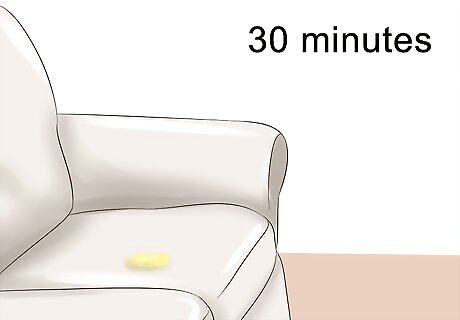
Let the solution set for about 30 minutes. Once the stain is completely wetted by the solution and you aren’t lifting any more stain from the fabric, let the solution soak into the stain for about 30 minutes. Check from time to time to make sure that the solution hasn’t dried out. If it is getting dry, dab on a little more dishwashing solution.
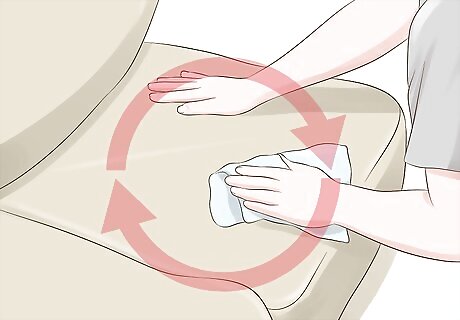
Repeat the process of blotting and setting. If the stain has not been completely removed, repeat steps 2 and 3, blotting the stain with solution, then letting it set for a half hour. After a couple repetitions, the stain should be gone. If it has been removed, wet a clean cloth with water, then blot at the place where the stain was to remove the soap solution. If the stain is still present, you will need to try a more potent cleaning solution.
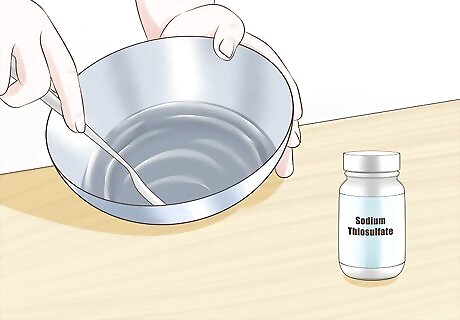
Make a solution of water and sodium thiosulfate. For particularly stubborn stains, blotting with dishwashing solution may not be enough. Create a more powerful cleaning solution by combining one cup (240 ml) of cool water with a tablespoon (14.79 ml) of sodium thiosulfate.
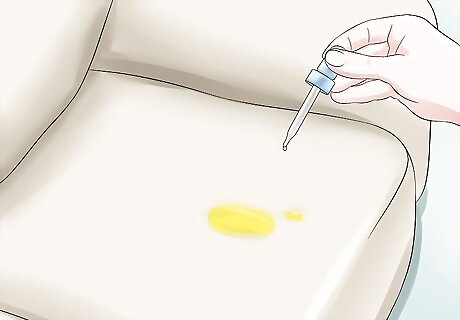
Apply the sodium thiosulfate solution with an eyedropper. Because sodium thiosulfate solution is very powerful, you need to apply it sparingly and only on the stained portion of the upholstery. Use an eyedropper to drop several drops of the solution onto the stain.
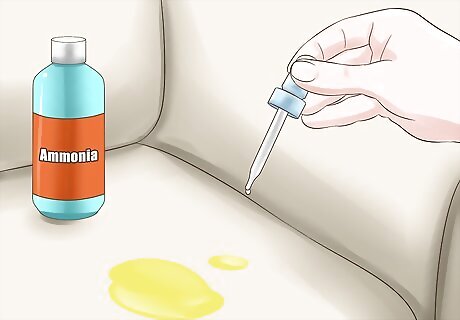
Add a few drops of ammonia to the stain. After you apply the drops of sodium thiosulfate solution, use the eyedropper to apply a couple drops of ammonia onto the stain as well. Ammonia is another powerful cleaning ingredients that will help separate the stain from the fabric.
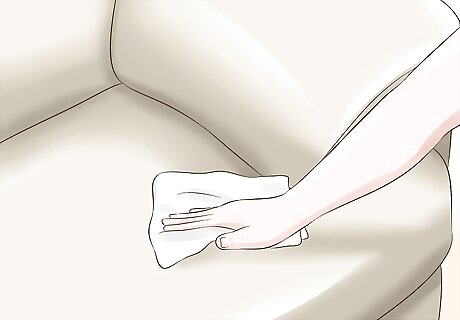
Blot using a clean, dry cloth. Use a dry cloth to blot at the area of the stain. The cloth will absorb the liquid and lift the stain that the ammonia and sodium thiosulfate help to dislodge from the fabric.
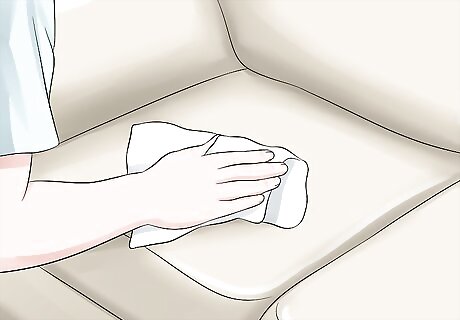
Blot with a wet cloth, then dry. Blotting with the dry cloth should have worked to completely remove the stain. After you lift the stain, wet a clean cloth with cool water, then dab at the area of upholstery you were working on. This will remove any traces of cleaning solution. Then use another clean cloth to blot the area dry.
Removing Iodine Stains From Carpet
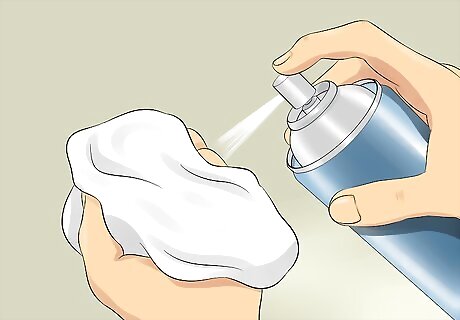
Pour dry cleaning solvent on a clean white cloth. Purchase a dry cleaning solvent, which is a liquid, non water-based cleaning solution that’s used to clean tough stains on a variety of different materials, including carpet. Instead of pouring the solvent directly on the carpet, first pour some on a clean, white cloth.
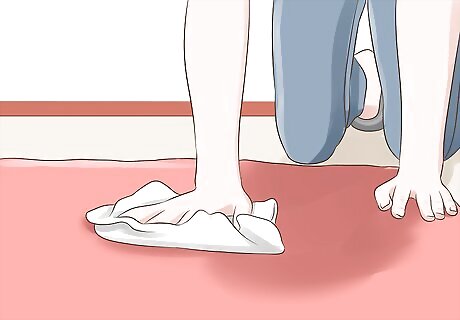
Blot at the carpet with the dry cleaning solvent. Gently dab at the stain on the carpet with the cloth that you wetted with the dry cleaning solvent. Keep blotting the stain until no more of it is being removed. If you didn’t successfully remove all the stain using the dry cleaning solvent, you will have to try another method. Before you do so, wet a cloth with water and dab at the stained area to absorb any dry cleaning solvent that may have been soaked into the carpet. Then pat the area dry with a dry cloth.
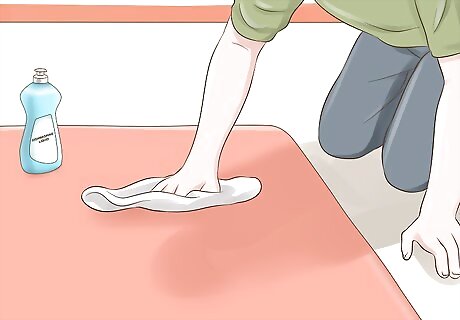
Blot the stain with dishwashing solution. Create the same dishwasher solution that was recommended to remove iodine from upholstery in Method 2, then dab the dishwasher solution onto the stain using a white cloth. Keep dabbing until you are no longer lifting any more stain. You don’t need to clean off the dishwashing solution before trying the vinegar solution. Don’t throw away the leftover dishwasher solution.
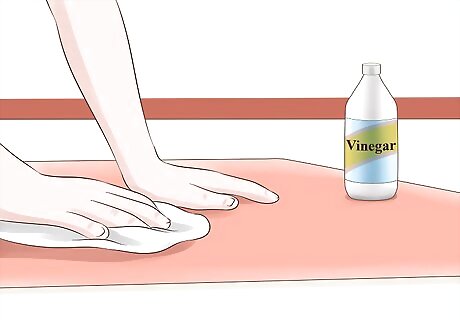
Dab the stain with a vinegar solution. If the dishwashing solution alone didn’t remove all the stain, create a vinegar solution in a small bowl using ⅓ cup (80 ml) of white vinegar and 2/3 cup (160 ml) of water. Then dip a clean white cloth into the solution and dab at the stain the same way as you did with the dishwashing solution.
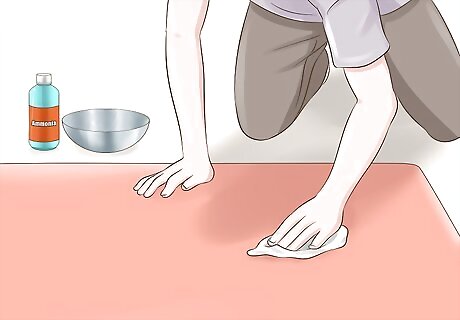
Dab the stain with an ammonia solution. If the stain is still present, create an ammonia solution made of 1 tablespoon (15 ml) ammonia and ½ cup (120 ml) of water. Then dip a clean cloth into the solution and dab at the stain.
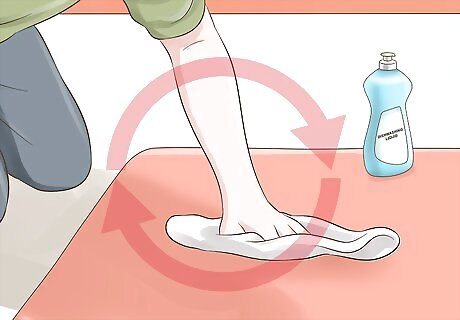
Blot the stain again with the dishwashing solution. Once more, dip a clean cloth into the dishwashing solution you used before and use it to blot at the stain. This will help to pick up any remaining stain and also lift up the remnants of vinegar and ammonia solution.
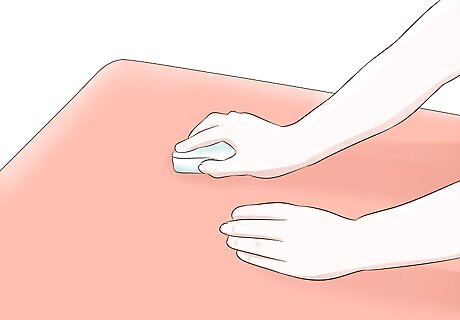
Sponge the carpet with cool water. Once the stain has been removed, wet a clean cloth with cool water, then dab at the area of carpet you were working on. This should fully remove any of the solution remnants and leave your carpet as good as new!
















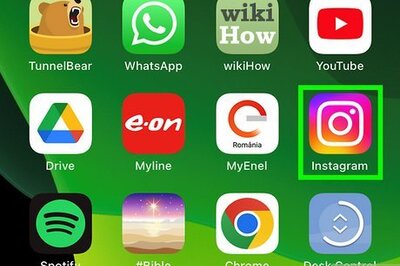


Comments
0 comment